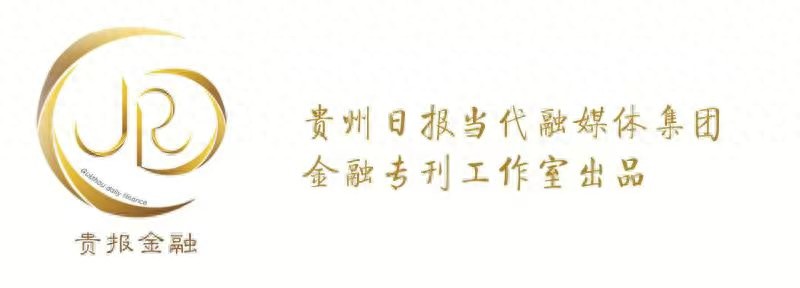
第一部分:基础知识
1.字母:26个字母的大小写
ABCDEFGHIJKLMNOPQRSTUVWXYZ
abcdefghijklmnopqrstuvwxyz
2.语音:元音的发音
五个元音字母:AEIOU
12个单元音:
4.句子:大小写,标点符号
第二部分:语法知识
一.名词:名词单复数,名词的格
(一)名词单复数
(二)名词的格
(2)表示无生命东西的名词通常用“ of +名词”来表示所有关系:如:
a picture of the classroom a map of China
第二部分:语法知识
二.冠词:不定冠词,定冠词种类:
(1)不定冠词:a / an a unit / an uncle
元音开头的可数名词前用an :
an egg / an apple / an orange / an eraser / an answer / an ID card / an alarm clock / an actor / an actress / an e-mail / an address / an event / an example / an opera / an houran old man / an interesting book / an exciting sport / an action movie / an art lesson /
(2)定冠词:the the egg the plane
2. 用法:
定冠词的用法:
不用冠词的情况:
第二部分:语法知识
三、代词、形容词、副词
代词:人称代词,物主代词
人称代词物主代词
主格宾格
第一
人称单数I(我)memy(我的)
复数we(我们)usour(我们的)
第二
人称单数you(你)youyour(你的)
复数you(你们)youyour(你们的)
第三
人称单数he(他)himhis(他的)
she(她)herher(她的)
it(它)itits(它的)
复数they(他们/她们/它们)themtheir(他们的/她们的/它们的)
形容词,副词:比较级,最高级
(一)、形容词的比较级
1、形容词比较级在句子中的运用:两个事物或人的比较用比较级,比较级后面一般带有单词than。比较级前面可以用more, a little来修饰表示程度。than后的人称代词用主格(口语中可用宾格)。
2.形容词加er的规则:
3.不规则形容词比较级:
good-better, beautiful-more beautiful
(二)副词的比较级
1.形容词与副词的区别(有be用形,有形用be;有动用副,有副用动)
2.副词比较级的变化规则基本与形容词比较级相同(不规则变化:well-better, far-farther)
第二部分:语法知识
四、数词:基数词、序数词
(1)1-20
one,two,three,four,five,six,seven,eight,nine,ten,eleven,twelve,thirteen,fourteen,fifteen, sixteen,seventeen,eighteen,nineteen,twenty
(2)21-99 先说“几十”,再说“几”,中间加连字符。
23→twenty-three,34→thirty-four,45→forty—five,56→fifty-six,67→sixty-seven,78→seventy-eight,89→eighty-nine,91→ninety-one
(3)101—999先说“几百”,再加and,再加末两位数或末位数;
586→five hundred and eighty-six,803→eight hundred and three
(4)l,000以上,先从右往左数,每三位数加一个“,”,第一个“,”前为thousand.第二个“,”前为million,第三个“,”前为billion
1,001→one thousand and one
18,423→eighteen thousand,four hundred and twenty-three
6,260,309→six million two hundred and sixty thousand three hundred and nine
750,000,000,000→seven hundred and fifty billion
序数词
(1)一般在基数词后加th
eg.four→fourth,thirteen→thirteenth
(2)不规则变化
one→first,two→second,three→third,five→fifth,eight→eighth,nine→ninth,twelve—twelfth
(3)以y结尾的十位整数,变y为ie再加th
twenty→twentieth, forty→fortieth, ninety→ninetieth
(4)从二十一后的“几十几”直至“几百几十几”或“几千几百几十几”只将个位的基数词变为序数词。
twenty-first,two hundred and forty-fifth
基数词转为序数词的口诀:
基变序,有规律,词尾加上-th.
一,二,三,特殊记,词尾字母t,d,d.
八去t,九去e, ve要用f替。
ty将y变成i,th前面有个e.
若是碰到几十几,前用基来后用序。
第二部分:语法知识
五、介词:常用介词:in, on, at, behind等
1.at表示时间概念的某一个点。(在某时刻、时间、阶段等)。
at 1:00(dawn,midnight,noon)在一点钟(黎明、午夜、中午)
2.on
1)表示具体日期。
注:(1)关于”在周末”的几种表示法:
2)在(刚……)的时候。
On reaching the city he called up his parents.
一到城里他就给父母打了一个电话。
3.in
1)表示”时段”、”时期”,在多数情况下可以和during互换,前者强调对比,后者强调持续。 in(during)1988(December,the 20th century)在一九八八年(十二月、二十世纪)
六、动词:动词的四种时态:
(1)一般现在时:
一般现在时的构成
当主语为第三人称单数(he, she, it)时,要在动词后加”-s”或”-es”。如:Mary likes Chinese.玛丽喜欢汉语。
动词+s的变化规则
(2)一般过去时:
动词过去式详解 动词的过去式的构成规则有:
A、规则动词
B、不规则动词(此类词并无规则,须熟记)小学阶段要记住以下动词的原形和过去式:sing – sang , eat – ate ,
see – saw , have – had , do – did , go – went , take – took , buy – bought , get – got , read – read ,fly – flew , am/is – was ,
are – were , say – said , leave – left , swim – swam , tell – told , draw – drew , come – came , lose – lost , find – found , drink – drank , hurt – hurt , feel – felt
(3)一般将来时:
基本结构:
I am going to go swimming tomorrow(明天). = I will go swimming tomorrow.
(4)现在进行时: am,is,are+动词现在分词
动词现在分词详解 动词的ing形式的构成规则:
第三部分:句法
1.陈述句
(1)肯定句:是指用肯定的语气来陈述的句子,如:
(2)、否定句:含有否定词或表示否定意义词的句子,如:
2. 疑问句
一般疑问句:是指询问事实的句子,此类句子必须用“yes”,或“no”来回答。
特殊疑问句:以特殊疑问词(what , where , who , which , when , whose , why , how等)开头引导的句子。此类句子应该问什么就答什么,不能用“yes 、no”来回答。
3.There be句型
There be 句型与have, has的区别
– END –
▍综合整理:小学英语
限 时 特 惠: 本站每日持续更新海量各大内部创业教程,一年会员只需98元,全站资源免费下载 点击查看详情
站 长 微 信: lzxmw777






